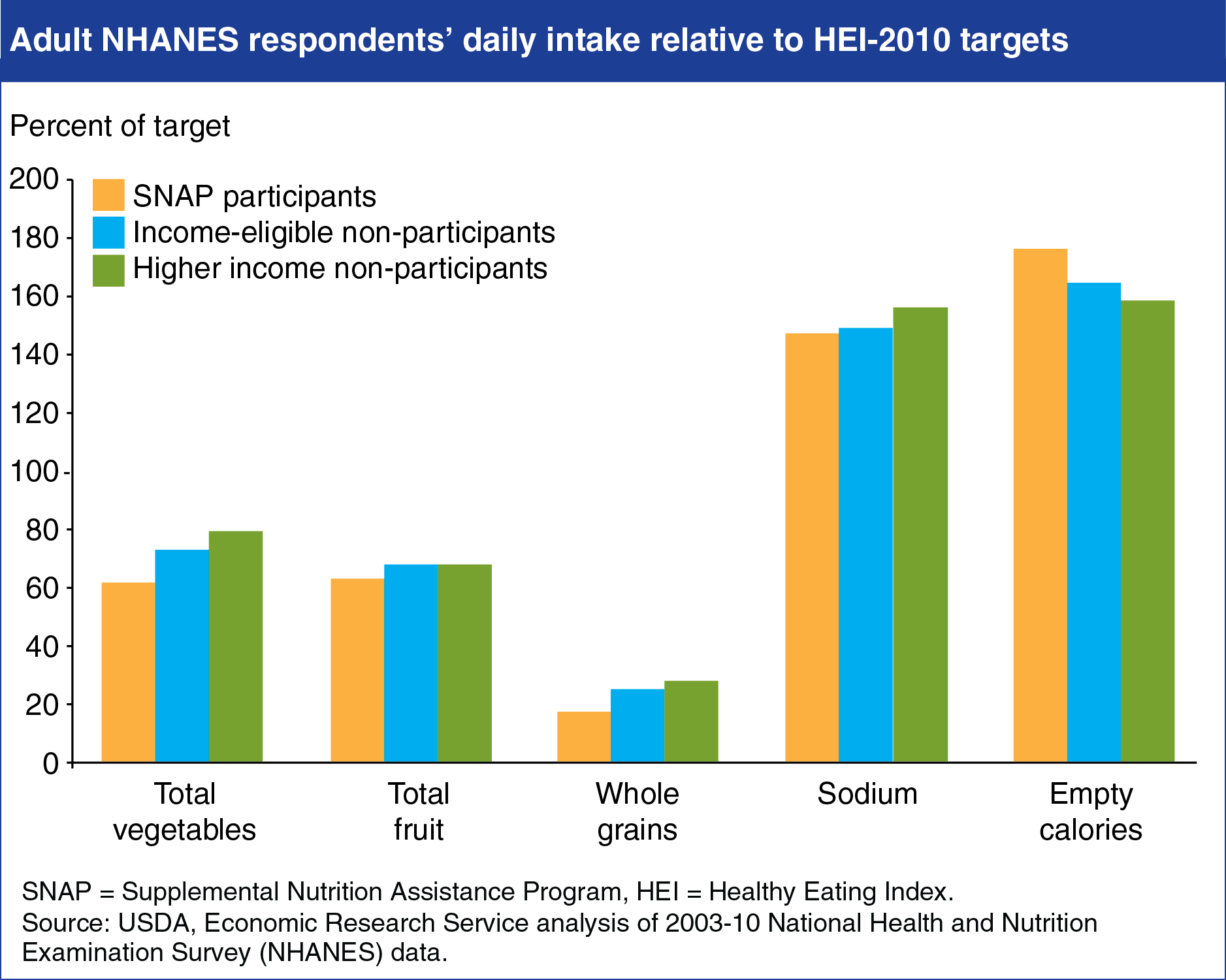Americans score low on many measures of diet quality
- by Lisa Mancino and Joanne Guthrie
- 1/8/2015

Dietary intake data reveal that like most Americans, the dietary patterns of participants in USDA’s Supplemental Nutrition Assistance Program (SNAP) do not meet recommendations. ERS researchers used data from the 2003-10 waves of the National Health and Nutrition Examination Survey (NHANES) to assess the diets of adult SNAP participants and other adult respondents relative to the 2010 version of the Healthy Eating Index (HEI). The HEI summarizes how closely one’s diet conforms to the Dietary Guidelines for Americans. Total HEI scores for adult SNAP participants averaged 46 out of a possible 100 HEI points, compared to 50 for income-eligible adults not receiving SNAP benefits, and 53 for higher-income adults (those with household incomes above 185 percent of the Federal poverty threshold). Adult SNAP participants scored lower on many components of the HEI; sodium intake was the only HEI component on which SNAP participants did better than higher-income adults. An expanded version of this chart appears in “SNAP Households Must Balance Multiple Priorities to Achieve a Healthful Diet” in the November 2014 issue of ERS’s Amber Waves magazine.

